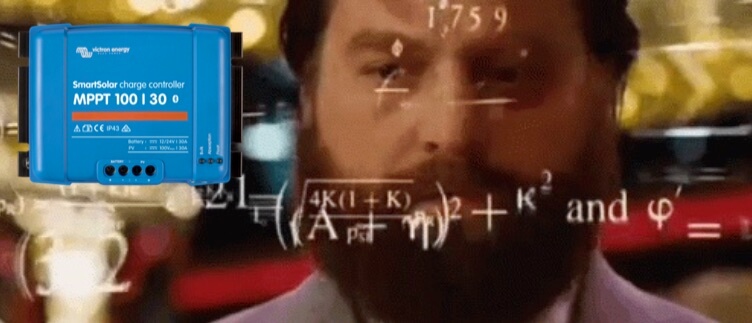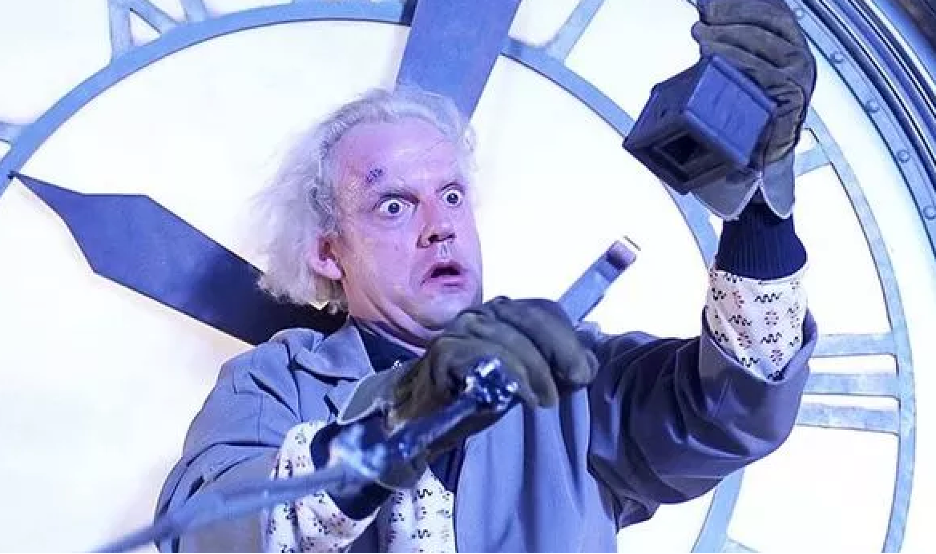Solar charge controllers typically come in two flavors, MPPT or PWM.
MPPT – Maximum Power Point Tracking
PWM – Pulse Width Modulation
When it comes to figuring out what option is best for your solar system application, the short answer is:
Get an MPPT charge controller.
We prefer MPPT charge controllers for the following reasons:
- MPPT charge controllers are typically more complex than PWM controllers and require a higher degree of sophistication in the manufacturing process. Usually, since the target market for the product isn’t trying to buy the cheapest option available, this results in a higher quality, more reliable product.
- A poor-quality charge controller can destroy a battery. If you want a power system that functions reliably with minimal maintenance for several years, don’t cut corners with cheap charge controllers. Ruined batteries are very common.
- An MPPT charge controller will deliver about 20% more output than a PWM charge controller assuming the same solar array and battery bank.
- MPPT charge controllers can work with higher voltage panels and series-connected panels.
Pulse Width Modulation
A simple explanation of how a PWM charge controller works is that it pulses a direct connection from the solar array to the battery bank. The duration of the connection varies depending on the voltage (roughly corresponding to the State of Charge) of the battery bank. A more depleted battery bank would receive longer pulses than one that is nearly fully charged.
The problem with PWM is that it forces the solar array to operate at the voltage it sees through the cables of the battery bank it is charging. This might be 13.5V, while most solar panels operate more effectively at a higher voltage.
Below is the IV (eye-vee) Curve of a typical 200W solar panel. This plots the relationship between voltage and current on the output of a panel as the resistance between the positive and negative leads goes from zero to infinite resistance.
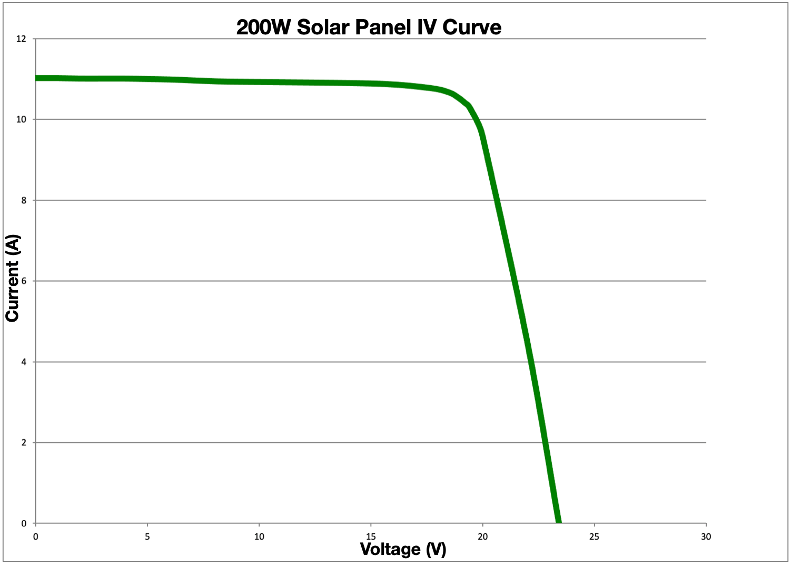
Since Power equals Volts x Amps, you can visualize the power output of this solar panel on a 13.5V battery bank through a PWM charge controller as the area shown in the blue box.

There is a better way.
Maximum Power Tracking
The point along the curve where the slope equals -1 A/V (where it turns downward) is the Maximum Power Point. This point moves as the IV curve shifts with changes in temperature and brightness. Brighter sunlight shifts the curve upward, increasing current. Colder temperatures shift the curve to the right, increasing voltage. Since this point moves, it needs to be tracked.
A tracking algorithm might look like the following:
A: Start at 18.0V – Measure power wait one second.
B: Increase voltage by 0.1V – Measure power wait one second. If power increased, repeat B. If power decreased, go to C.
C: Decrease power by 0.1V – Measure power wait one second. If power increased, repeat C. If power decreased, go to B.
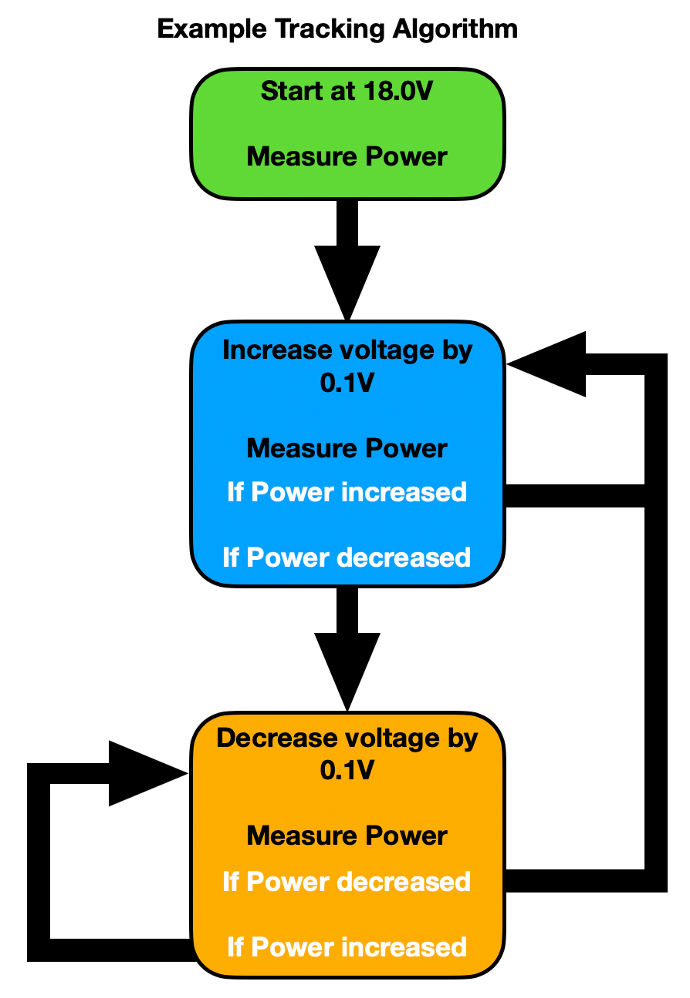
The charge controller drawing power from the panel at the point of maximum output power, the results can be visualized as the area of the red box.

The difference in output power between the PWM charge controller and the MPPT charge controller becomes obvious when the two boxes are laid on top of each other.
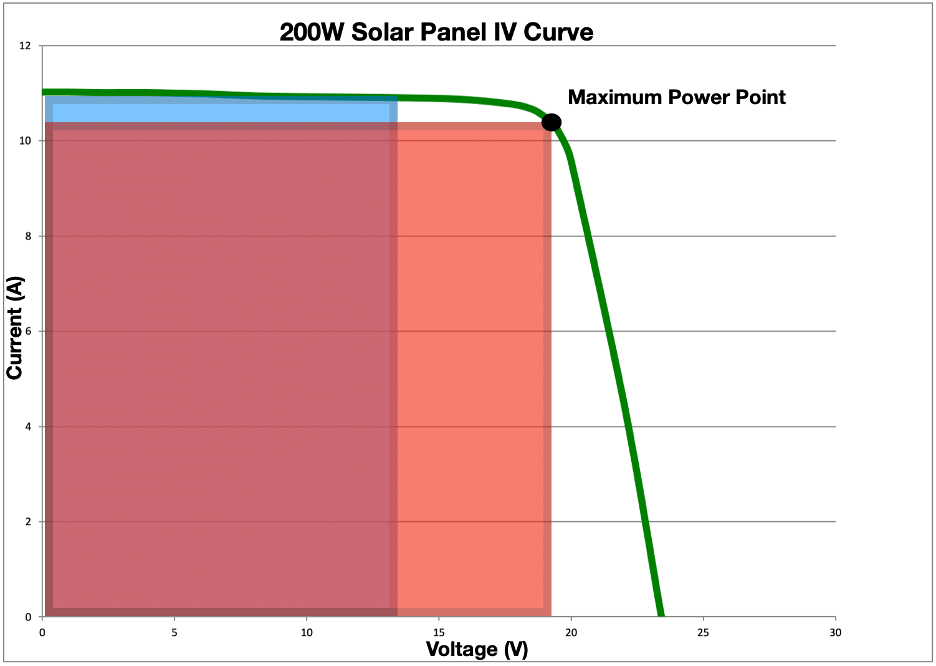
In most situations, the output of an MPPT charge controller is about 20% more than the output of a PWM charge controller.
Another critical aspect of an MPPT charge controller is that it has a DC/DC transformer to step down the higher voltage of the solar array to the lower voltage needed to safely charge the battery bank. Typically, these parameters are programmed into the charge controller via Bluetooth.
Situations Where PWM Might be Preferred
Some PWM charge controllers may produce less EMF than MPPT controllers, which would make them preferable when operated near radio and telecommunication equipment.
MPPT may be overkill for gate openers, electric fences, security lights, etc.
To learn more, check out this blog on how to select the right charge controller for your solar array.
